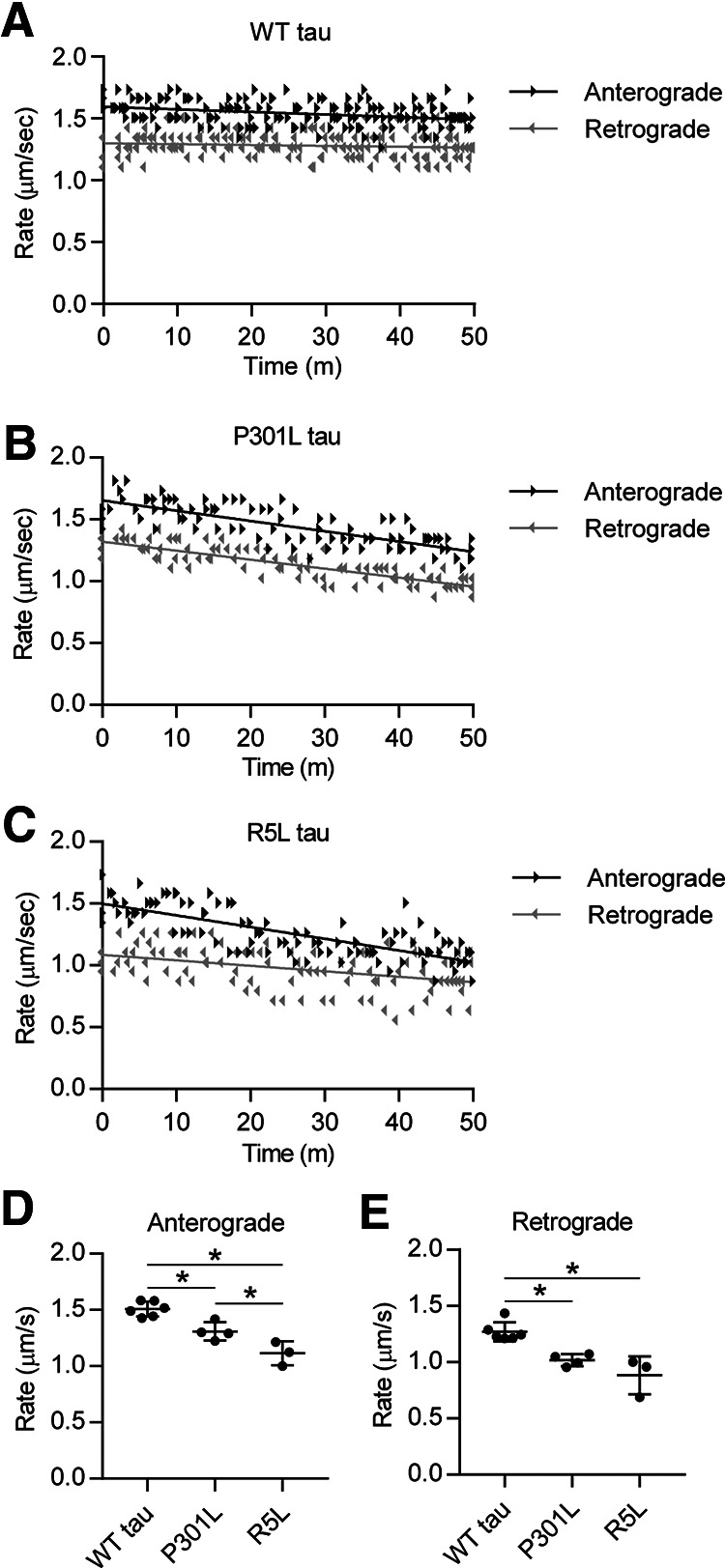Figure 1.

P301L and R5L tau disrupt fast axonal transport in squid axoplasm model. A, Vesicle motility assays in the isolated squid axoplasm were used to measure the effects of tau proteins on FAT. Rate measurements (arrowheads, µm/s) from each independent experiment are plotted as a function of time (minutes). Black arrowheads represent anterograde FAT rates, and gray arrowheads represent retrograde FAT rates. Lines represent linear regression fits. WT tau monomer (2 μm, a near-physiological level) did not alter anterograde or retrograde FAT rates. B, In contrast, perfusion of axoplasms with P301L tau monomers (2 μm) inhibited FAT rates in both directions. C, Perfusion with R5L tau monomers at 2 μm also inhibited anterograde and retrograde FAT rates. D, Quantitation of these effects revealed that compared with perfusion with WT tau (1.51 ± 0.07 μm/s), perfusion of P301L tau (1.31 ± 0.08 μm/s) or R5L tau (1.11 ± 0.11 μm/s) significantly decreased mean anterograde FAT rates. E, Perfusion of P301L (1.02 ± 0.05 μm/s) and R5L tau (0.88 ± 0.17 μm/s) also decreased retrograde FAT rates compared with perfusion of WT tau (1.27 ± 0.09 μm/s). Statistical comparisons were made using a one-way ANOVA (WT tau, n = 6; P301L tau, n = 4; R5L tau, n = 3); data indicate mean ± SD; *p ≤ 0.05).
